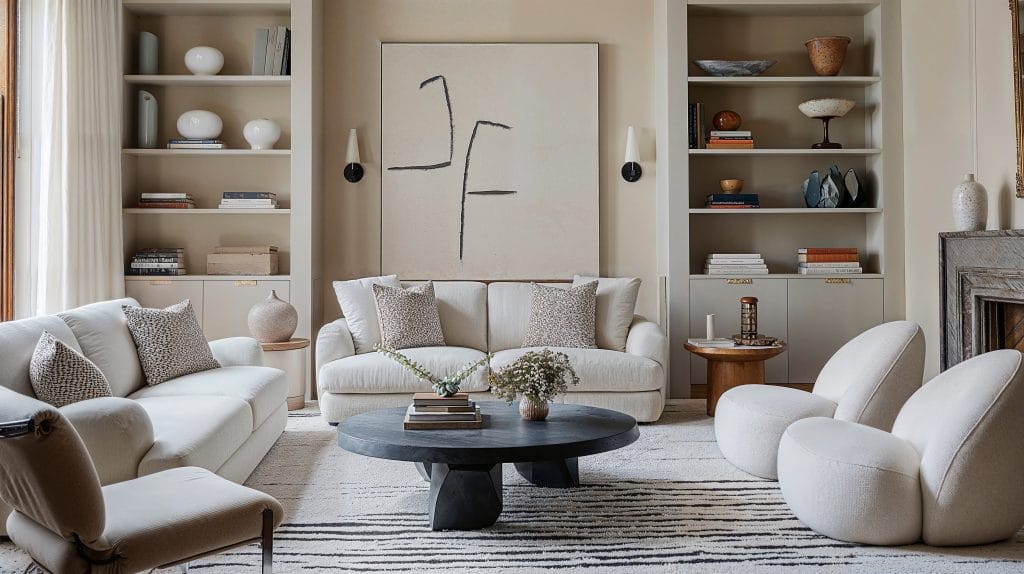Get expert miami interior design for high-end home and office interiors.
Get expert miami interior design for high-end home and office interiors.
Blog Article
Change Your Home With Crucial Concepts of Interior Layout and Appearances
By recognizing the impact of color concept and the significance of structure and patterns, one can produce rooms that are not just visually appealing however additionally deeply individual. Achieving this balance entails more than mere design; it incorporates a strategic plan and an eager understanding of just how each element engages within a room.
Understanding Color Concept
Shade theory is an essential element of indoor design that significantly affects state of mind, perception, and overall aesthetic. Understanding the principles of color theory allows developers to develop rooms that reverberate psychologically with owners while meeting useful requirements (luxury interior design). Colors can be categorized right into 3 main types: primary, second, and tertiary. Each group plays a crucial role in developing consistency within an area.
The psychological impact of shades is profound; cozy colors such as reds and oranges evoke power and warmth, while cool tones like blues and environment-friendlies promote peace and harmony. The use of corresponding shades improves aesthetic rate of interest, creating striking contrasts that can raise a room's charm.
Neutral shades, on the other hand, function as a versatile background, permitting other layout elements to radiate. It is important to take into consideration elements such as illumination and the room's function when picking a color combination, as these can modify the perception of colors throughout the day.
Inevitably, a well-considered color pattern can change a room, cultivating a sense of comfort and design that aligns with the residents' choices. Proficiency of color theory is, consequently, an important skill for any kind of indoor developer aiming to create harmonious and inviting atmospheres.
Attaining Equilibrium in Layout
Just how can designers accomplish a sense of equilibrium in their rooms? Attaining balance in style is fundamental to developing unified interiors.
Asymmetrical equilibrium, on the various other hand, depends on varying elements that still achieve a natural appearance. This technique enables more vibrant and casual arrangements, providing interest while keeping stability. By thoroughly selecting differing sizes, shades, and structures, designers can develop a visually compelling space that really feels balanced yet energetic.
Radial equilibrium stresses a central prime focus with components radiating exterior. This style is commonly seen in round layouts, where furnishings and design develop a cohesive border that draws the eye internal.
Ultimately, attaining balance needs thoughtful consideration of scale, percentage, and the connections in between elements. luxury interior design. By masterfully using these balance concepts, designers can transform spaces right into settings that feel both cosmetically pleasing and functionally harmonious, boosting the overall experience for passengers
Importance of Spatial Awareness

An eager feeling of spatial recognition permits developers to determine focal points within an area, directing the customer's attention to key functions while maintaining an overall feeling of unity. It likewise assists in the strategic placement of lighting, which can drastically influence the understanding of area and mood. Moreover, comprehending spatial connections enables the designer to deal with the certain requirements of residents, guaranteeing that each area offers its desired function without compromising looks.
Inevitably, spatial understanding is crucial for maximizing the possibility of any type of indoor area. By meticulously thinking about the interplay in between measurements, format, and feature, designers can develop atmospheres that not just meet sensible requirements yet also stimulate a feeling of comfort and elegance, enhancing the general living experience.
Incorporating Structure and Patterns
Welcoming a diverse series of appearances and patterns can substantially boost the visual and responsive allure of an interior area. The critical use of numerous materials-- such as timber, steel, fabric, and stone-- develops deepness and interest, making an area feel more inviting and vibrant. For circumstances, combining smooth surfaces with rough structures can develop an equilibrium that draws the eye and engages the senses.
When including patterns, think about both scale and repeating. Big patterns can offer as prime focus, while smaller sized, refined styles can match various other components without frustrating the room. Layering patterns, such as pairing flower paddings with candy striped tosses, includes intricacy and a feeling of consistency if implemented attentively.
It is also essential to maintain a natural color palette, ensuring that appearances and patterns interact as opposed to contend for attention. By picking a couple of essential appearances look here and patterns, you can produce a combined visual that mirrors your personal style while enhancing the general setting of the room. Inevitably, the cautious unification of these aspects can change a mundane room into an innovative environment abundant with personality and warmth.
Individualizing Your Space
Developing my site a space that shows your individuality is important to attaining a really welcoming atmosphere. Customization in interior decoration permits you to instill your distinct design and interests into your home, changing it from a simple sanctuary right into a refuge that talks with who you are. Begin by selecting a color combination that reverberates with your feelings-- bold shades can invigorate, while soft tones supply serenity.
Integrate art work and style that mirror your passions, whether it be travel, nature, or abstract ideas. Showing individual collections, such as publications, pictures, or keepsakes, can stimulate cherished memories and create centerpieces within a room. Furthermore, think about tailoring useful items, like upholstered furniture, to align with your aesthetic preferences.

Conclusion
To conclude, the improvement of a home through the crucial concepts of interior decoration and looks necessitates Our site a comprehensive understanding of color concept, equilibrium, spatial understanding, structure, and personalization. Each aspect adds substantially to creating a harmonious and useful living environment - miami luxury interior design. By attentively integrating these principles, people can enhance the visual charm and psychological resonance of their areas, inevitably fostering a home that shows one-of-a-kind identities while supplying convenience and practicality
Report this page